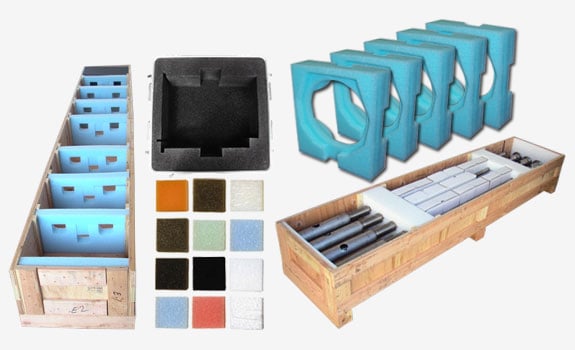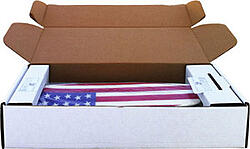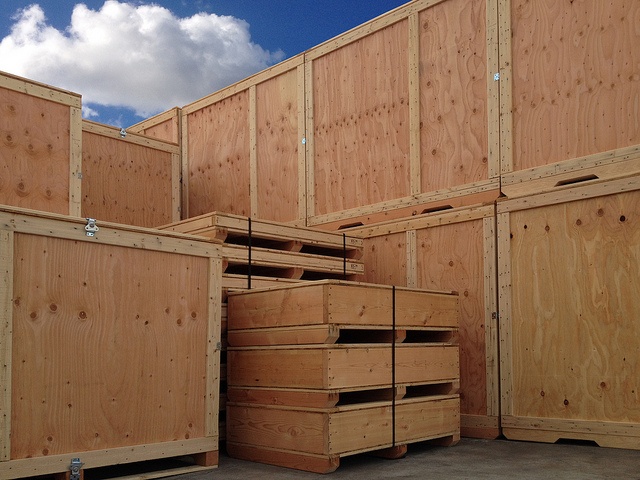Boxing materials such as wood crates, corrugated cardboard boxes, and shipping containers offer excellent external protection during shipping. For internal protection, however, you’ll need packaging materials that can help absorb shock and prevent contents from shifting, vibrating, and sliding.

Some of the most common packaging materials include:
- Biodegradable Bubble Cushioning
- Cardboard Inserts/Separators
- Foam Sheets
- Packing Peanuts
- Paper
Here’s what each has to offer:
Biodegradable Bubble Cushioning

Besides being eco friendly, biodegradable bubble cushioning offers excellent protection for shipping and storing fragile items. Each sheet, roll, or bag consists of multiple air cushions that look like air bubbles. These air cushions are evenly distributed, which protects fragile items from shock and vibration.
Invented in 1960 by engineers Marc Chavannes and Al Fielding, bubble cushioning minimizes the need for additional packaging materials, which decreases the cost of the shipment. It is also lightweight, which also keeps shipping charges low. Besides bags, sheets, and rolls, bubble wrap comes in large bubble, small bubble, anti-static, and even self-adhesive varieties.
Cardboard Inserts/Separators
 Cardboard inserts/separators can be used as a secondary layer of protection when shipping packaged in an external container. This prevents the packaged items from moving around in the container. Also called “cardboard sheets,” this packaging material is inexpensive, recyclable, and reusable.
Cardboard inserts/separators can be used as a secondary layer of protection when shipping packaged in an external container. This prevents the packaged items from moving around in the container. Also called “cardboard sheets,” this packaging material is inexpensive, recyclable, and reusable. Foam Sheets
 Foam sheets provide a soft, but tough cushion, which helps absorb shock. This type of packaging material is often used to line boxes, crates, and shipping containers.
Foam sheets provide a soft, but tough cushion, which helps absorb shock. This type of packaging material is often used to line boxes, crates, and shipping containers.Packing Peanuts

Although kids may try to eat them, packing peanuts are not edible. The most common type of packing peanut looks like a peanut or an “S.” Invented in 1965 by The Dow Chemical Company, peanuts were originally made from polystyrene, which was not eco friendly. In 1991, however, a biodegradable cornstarch peanut was introduced into the market.
Today, polystyrene packing peanuts have a significant recycled content and some even dissolve in water!
Other shapes have entered the market as well. Besides the common peanut and “S” shape, packaging peanuts may resemble tubes, the number “8” or a wide “U-like” shape. They also come in all sizes.
No matter what the shape, size, or material, all packing peanuts have the ability to interlock and act as a soft cushion when pressed. These magic peanuts bounce back once the pressure is off. The soft cushion that forms offers superior protection against bounce, shock, jostling, sliding, and dropping.
Packaging peanuts are static-free, inexpensive, and non-toxic—making them safe to use around kids.
Paper
Packaging paper adds protection by stabilizing items. This packaging material is often used to pack smaller items. Besides crumpling and stuffing the paper between items, the paper can be stuffed around the items, and layered on the bottom and top of the box or crate for added shock absorption.
Valley Box offers a variety of popular packaging materials to help secure your shipment and send it on it’s way—safely. To discuss your packaging needs, contact a Valley Box representative today!




